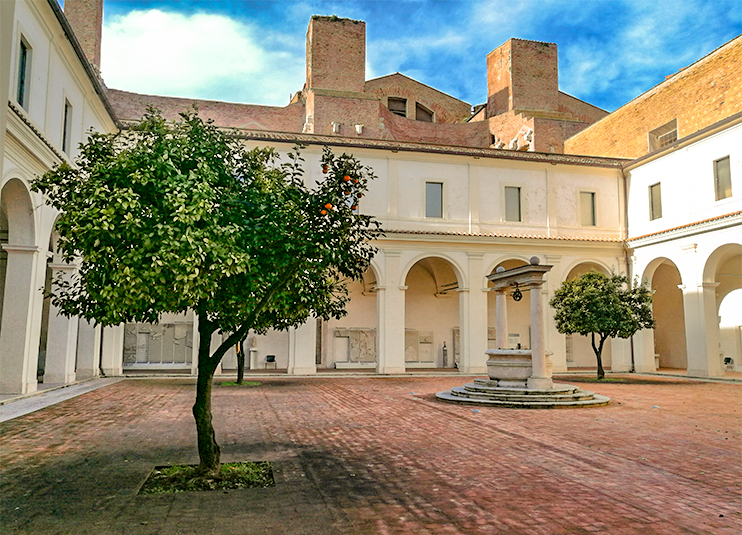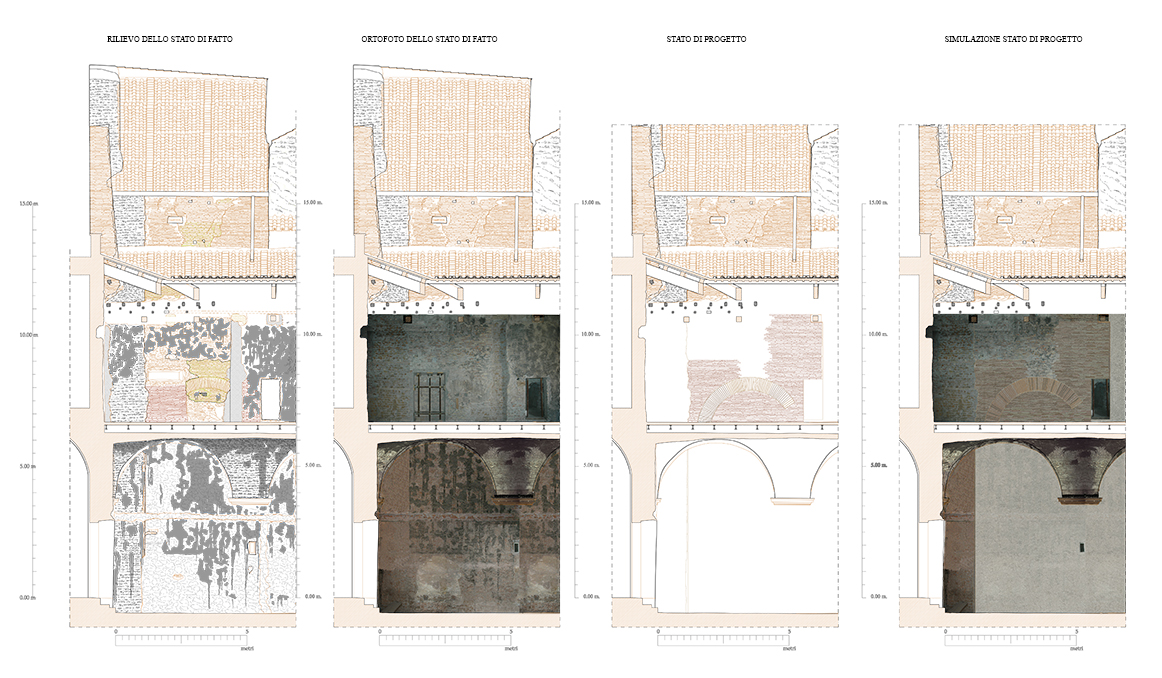Ludovisi Cloister
National Roman Museum - Roma (RM)

SIte: Rome
Year: 2014
Client: MIBACT - Soprintendenza Speciale per il Colosseo e l'Area Archeologica Centrale di Roma
Area: 1470 mq
The Ludovisi Cloister is the small cloister of the Certosa di Santa Maria degli Angeli.
It is currently part of the architectural complex of the National Roman Museum in the Baths of Diocletian. Before the restoration, the surfaces of the cloister showed a differential degradation, depending on the exposure to humidity and / or the washout of atmospheric agents. On the first level, a ventilated shaft was created to reduce rising humidity. All the plasters damaged with pozzolanic mortars were reintegrated and the restoration was completed with the drafting of a dull color rebalancing. The second level of the elevation had a large part of the surface completely eroded by rainwater, due to the insufficient coverage of the canopies. The plasters of the second level had completely lost their surface finish and had the pozzolanic plaster on sight, very disintegrated and with a widespread phenomenon of surface decohesion. After a careful analysis of the layering of the plasters and painting, the consolidation of the plasters was carried out, the hand scraping of the layers superimposed on the original drab and the drafting of a final plaster made with the same components as the sixteenth-century one. In the second level of the cloister an in-depth study was necessary for the reintegration of a particular constructive insertion between a pillar of the Roman factory and the sixteenth-century masonry of the Charterhouse. The state of affairs was studied in detail and compensation was planned with respect to the dimensions and the different existing construction types.
In 2016 this restoration project won the European Union Prize for Cultural Heritage / Europa Nostra Awards.


.jpg)








.jpg)
.jpg)
.jpg)
.jpg)
.jpg)
.jpg)
.jpg)
.jpg)
.jpg)
.jpg)
.jpg)